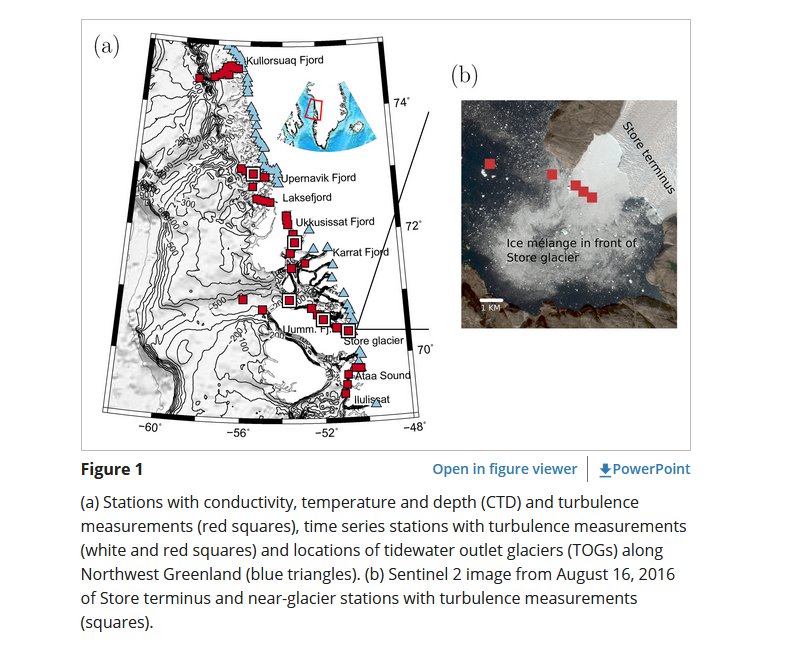Vertical Mixing in Stratified Fjords Near Tidewater Outlet Glaciers Along Northwest Greenland
New publication by Jørgen Bendtsen, Søren Rysgaard, Daniel F. Carlson, Lorenz Meire, Mikael K. Sejr

Abstract:
Vertical mixing of upper water masses in Arctic fjords is important for circulation and transport of nutrients and heat. However, the distribution of turbulent mixing is poorly known. Here we present hydrographic and microscale turbulence measurements from six fjords in Northwestern (69°N–75°N) Greenland. Water mass distributions showed the presence of warm bottom water of Atlantic origin in all fjord transects and a significant modification of upper water masses in fjords with tidewater outlet glaciers. Spatial and temporal distribution of turbulence in the fjords showed, in general, low rates of turbulent kinetic energy, ε (∼10−9 W kg−1), and strong stratification implies that vertical exchange in the upper ∼200 m was relatively weak. However, measurements within 2 km of the terminus of a tidewater outlet glacier showed values of ε and inferred turbulent diffusion coefficients >10−4 m2 s−1 that were about two orders of magnitude larger than elsewhere in the deep fjords. This elevated mixing corresponded to comparatively large heat and salt fluxes. These observations suggest that vertical mixing near tidewater outlet glaciers results in localized mixing hot spots, likely due to subglacial discharge and near-glacial current shear, that contribute significantly to vertical exchange in the deep fjords.
